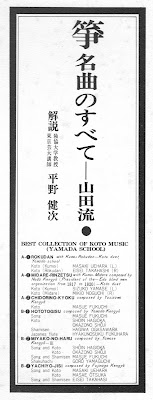ALI AL-ANSEE / YA IYOONEE
O MY EYES
Ed. al-Habbabee, 1999, 0552
Another great Yemenite singer/ud player from Sana'a. Thanks to Leonidas who found the following text about Al-Ansee's (Anisi/Ansi) life and career :
He is the artist Ali bin Ali bin Yahya Al-Ansi , born in the city of
Sana'a , Al-Basha neighborhood , in 1933 AD . A well-known Yemeni artist
(singer, musician, composer), famous for his beautiful voice and
perfect performance, he sang about love in all its forms, about
revolution, and about nature.
His father was an officer in the
front army (Bakshawsh) artillery. Ali Al-Anisi grew up in a family that
suffered economically, so his father was forced to move from one region
to another in search of a livelihood. He moved to elementary school,
then moved to middle school, and after leaving it, he moved to Dhamar to
live with his brother, Judge Muhammad. From Dhamar , he moved to Taiz ,
where his brother, Brigadier General Ahmed Al-Ansi, was working. There
he joined the army and worked as a military clerk for the Al-Hujaria
detachment.
His artistic sense and musical taste began to form
with the beginning of his listening to the songs recorded in the CDs of
some Yemeni artists from the generation that preceded him, such as
Al-Mas, Al-Jarash and Al-Antari. And influenced by his friend Al-Azzi
Muhammad Abdullah Al-Snidar, who was the first to hear Al-Ansi sing and
play the Oud instrument . This increased his attachment to singing, so
he began his research journey. He was greatly impressed and influenced
by artists:
Abdul Rahman bin Ali Reda
Ahmed Al Hamami
Ahmed Abdullah Al-Salmi
Qasim Al-Akhfash
Ahmed Ashish, who had an artistic influence on the artist Ali Al-Ansi.
Signs
of his talent for singing began to appear with the first song he sang,
which is the song ( They prevent my eyes for your goodness, you do not
see ) by Almas. His brother, Brigadier General Ahmed, admired him and
encouraged him, as he was working as an assistant to the (wireless)
traffic controller at the fourth point in Taiz . During this period, he
was singing only, and he had not yet learned to play the oud instrument ,
but his attempts to compose began to appear, and he composed for the
first time the song (Kol Al- Nas Love Al-Zein ), which was sung by the
artist Ahmed Al-Snidar . And this was through the simplest tools that
produce rhythms , then he trained himself to play until he was able to
perform the first song, playing and singing.
His fame began
through his performance of light songs of the Sanaani color, and he
performed other than this color, so he sang songs from other regions of
Yemen, such as Al- Udayn, then he moved to performing lengthy songs. He
contributed to a group of beautiful songs through a group of lyrical
poems that he wrote, composed and sang , the most famous of which are
(There is no good teacher), (Let the hand of the creature), (Your night,
my night) and others. He had a great position on the popular and
official levels during his life and after his death, due to his
distinguished good voice and beautiful playing, and his interest in the
melodies of Yemeni artistic heritage and folklore, especially the
folklore of the central regions of Yemen. He was awarded the Medal of
Literature and Arts from President Ali Abdullah Saleh twice after his
death, the first in 1984 AD and the second in 1989 AD, and the Medal of
Arts from former President Ali Nasser Muhammad. Before the establishment
of the unit, he worked in the Coordination Department at Radio Sana'a ,
then in the Department of Moral and Political Guidance before his
death.
























